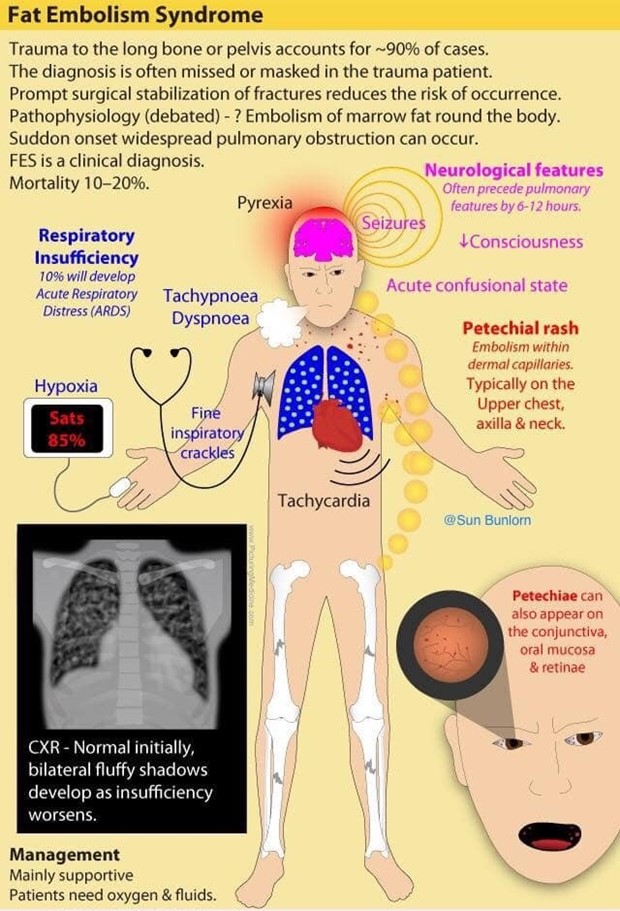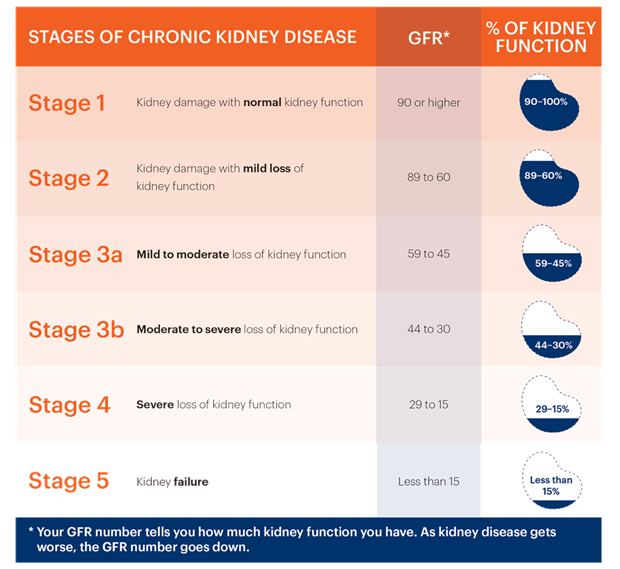A client sustained a left femur fracture 3 hours ago. Initial vital signs and assessment were within normal limits with the exception of left leg pain.
The nurse re-assesses the client and documents the following:
- Temp: 37.2 C Pain: 7/10-chest 5/10 left leg.
- Pulse: 110 bpm
- Respirations: 40 breaths per min, labored 02 saturation: 88%
- Neuro: A&O x 3. Anxious Skin: Petechiae to neck and anterior chest.
Based on this assessment, which action is appropriate at this time?
Notify the healthcare provider that the client's pain is not well-managed
Reassure the client that the pain and stress of the fracture will soon get better.
Order a chest CT Computerized Tomography) to rule out a pulmonary embolus (PE).
Notify the healthcare provider that the client may have a fat embolism
The Correct Answer is D
Fat embolism syndrome can occur when fat globules enter the bloodstream after a long bone fracture, such as a femur fracture. The fat globules can travel to the lungs and cause respiratory distress and decreased oxygen saturation. The symptoms observed in the client, including tachypnea (labored breathing), decreased oxygen saturation (88%), and the presence of petechiae (small red or purple spots) on the neck and anterior chest, are consistent with fat embolism syndrome.

Fat embolism syndrome is a serious condition that requires immediate medical attention. Notifying the healthcare provider allows for prompt evaluation, confirmation of the diagnosis, and initiation of appropriate treatment. This may involve further diagnostic tests such as a chest CT scan, as mentioned in one of the options, to rule out other potential causes or complications.
Nursing Test Bank
Naxlex Comprehensive Predictor Exams
Related Questions
Correct Answer is D
Explanation
Aspiration refers to the inhalation of gastric contents or other substances into the respiratory tract. During surgery, when the patient is under general anesthesia, the protective airway reflexes may be suppressed, increasing the risk of aspiration. If stomach contents enter the lungs, it can lead to aspiration pneumonia, respiratory distress, and other complications.
While myocardial infarction (MI), hernia, and cerebral vascular accident (CVA) are possible complications that can occur during surgery, they are not specifically related to airway issues.
MI is a cardiac event involving the blood supply to the heart muscle, hernia refers to the protrusion of an organ or tissue through an abnormal opening, and CVA refers to a disruption of blood flow to the brain. These complications can have various causes but are not directly related to the airway during surgery.
Correct Answer is C
Explanation
The glomerular filtration rate is a measure of how effectively the kidneys filter waste and excess fluid from the blood. It is a key indicator of kidney function. CKD is staged based on the GFR, which provides an estimate of the percentage of normal kidney function remaining.
While serum creatinine and urea levels are important markers used to assess kidney function, they are not the sole criteria for staging CKD. The degree of altered mental status and total daily urine output are important clinical observations but are not used for staging CKD.

Whether you are a student looking to ace your exams or a practicing nurse seeking to enhance your expertise , our nursing education contents will empower you with the confidence and competence to make a difference in the lives of patients and become a respected leader in the healthcare field.
Visit Naxlex, invest in your future and unlock endless possibilities with our unparalleled nursing education contents today
Report Wrong Answer on the Current Question
Do you disagree with the answer? If yes, what is your expected answer? Explain.
Kindly be descriptive with the issue you are facing.
